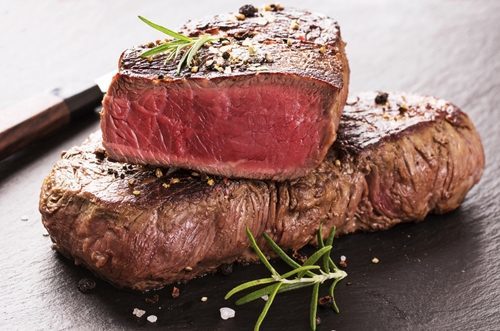Who among us with a carnivorous appetite would turn down a juicy steak, one so fresh it looks like it came off the cow the morning before?
Well, what if we were to tell you the latest fad in foodservice isn’t fresh meat, but actually the opposite? Dry aged meats have become quite the delicacy, and supermarkets or grocery stores with the right equipment in their prepared foods departments could profit substantially from introducing this gourmet foodstuff to their shoppers.
What makes dry aged meats taste so impossibly delicious, and how can the commercial foodservice industry take advantage of this mouthwatering trend?
What is dry aged meat?
Dry aging involves controlling the decomposition of beef or other meat products. It’s similar to the way one might age cheese. According to Fine Cooking, dry aging meat in cheesecloth facilitates the passage of enzymes throughout the meat, softening the muscle tissue and releasing a bounty of flavor.
“Customers are willing to pay top dollar for dry aged meats.”
These meats are a perfect low-cost solution for supermarkets and grocery stores looking to add a premium food option to their prepared foods menu. Customers are willing to pay top dollar for dry aged meats, but grocers don’t have to shell out capital on expensive commercial cooking assets to participate in dry aging. A few affordable equipment upgrades can make dry aged meat initiatives all the more lucrative.
Refining refrigeration
Time is the most valuable ingredient to any dry age processes. Chefs around the world experiment with how time changes the flavor of the meat they’re aging, pushing the dry aging process to the limit and beyond.
Prepared food departments should feel free to do the same, but will need to dedicate refrigeration space to the cause if they hope to capitalize on this emerging trend. Furthermore, grocers concerned with food safety may feel more comfortable separating dry aged products with their fresh meats.
If supermarket managers do plan on investing in new refrigeration assets to accommodate dry aging, they should focus on units with advanced temperature and humidity controls, as these tools will help keep dry aged meats in a balanced environment as it undergoes this delicate process. Smarter refrigeration controls ensure investors maximize their revenue on dry aged meat products.
Instead of traditional refrigeration equipment, grocers could instead invest in maturation cabinets, like Maturmeat, manufactured by Stagionello. They’re specifically designed for dry aging meat on a commercial scale. Maturmeat cabinets come in several different styles and sizes, both single- and dual-chamber models. From a touch screen mounted on the cabinet, users can control temperature, humidity and air speed, as well as regulate pH levels, monitor the internal environment for safety purposes and manage a library of dry aging recipes.
‘Carving’ out room for better preparation utensils
In the past, supermarkets have shied away from dry aging because of the meat’s significant weight loss during the dry aging process, according to Forbes. However, considering the ground swell of consumers clamoring for dry aged meats and reduced competition from neighboring businesses, supermarkets that take the leap into dry aging have the potential to succeed greatly, especially if they use sharp cutting utensils and well-calibrated measuring equipment.
These guarantee prepared food department employees extract the highest yield from a slab of dry aged meat without wasting good material. Partnering with an equipment dealers that offers on-site training on specialty commercial cooking equipment can also optimize the dry aging process.
As dry aged meats prove, for a taste of high society, supermarkets and grocers don’t need a billionaire’s bankroll.
To view products related to dry aging meat, check out the Maturmeat products we offer from Stagionello.
